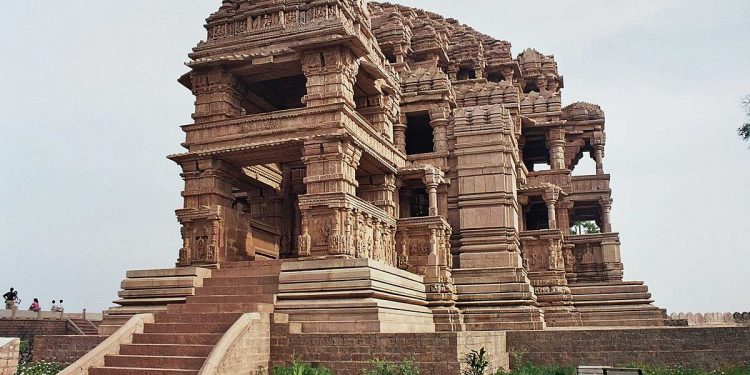Saas (Mother-in-Law) Bahu (Daughter-in-Law) Temple!! You might be thinking how can a temple have name like this?
This temple is 11th-century twin temple situated in Gwalior, Madhya Pradesh. The temple is damaged from numerous invasions and Hindu-Muslim wars in the region.
How temple got its unique name?
The temple was built in 1093 by King Mahipala of the Kachchhapaghata dynasty, according to an inscription found in the larger of the twin temple.
There are different stories surrounding the temple name while one story states that the temple name doesn’t glorify the relation between mother in law and daughter in law in any way.
On the other hand the other story states that the queen of King Mahipala was an ardent devotee of Lord Vishnu. So the king constructed the temple for his wife which was dedicated to Lord Vishnu in his Padmanabha form and was named originally as Sahastra Bahu Temple meaning ‘the one having a thousand arms’, a synonym for Lord Vishnu.
And later on king constructed one more temple nearby that temple as his daughter in law was an ardent follower of Lord Shiva. After this both temples were collectively being called as Sahastra Bahu Temple
As the time passed the temple lost its original name and was being referred as Sas Bahu temples by the locals.
Apparently, the Saas temple is comparatively larger than the other shrine. This temple mainly has three entrances from three different directions. In the fourth direction, there is a room which is currently closed.
The entire temple is covered with carvings, notably 4 idols of Brahma, Vishnu and Saraswati above its entrance door. The pillar carvings show Vaishnavism, Shaivism and Shaktism related carvings. The larger temple ornamentation covers all the exterior walls and all surviving interior surfaces.
The Saas temple has a square sanctum attached to a rectangular two storey antarala and a closed three storey mandap with three entrances. The temple main entrance porch has four carved Ruchaka ghatapallava-style pillars that are load-bearing. The walls and lintels are intricately carved, though much defaced.
On the lintel of the entrances, friezes of Krishna-leela scenes are carved inside, while the outer side narrate legends from other Hindu texts. Above the lintel is Garuda, the vahna of Lord Vishnu
The Bahu temple also has a square sanctum with 9.33 feet (2.84 m) side, with four central pillars. Its Maha-Mandapa is also a square with 23.33 feet (7.11 m) side, with twelve pillars.The temple, like most Malwa and Rajputana historic temples, provides multiple entrances to the devotee. The roof consists of two rotated squares that intersect to form an octagon capped by successive overlapping circles. The pillars have octagonal bases as well, with girls carved but these have been defaced and mutilated. The sanctum has an image of damaged Vishnu, next to who stands Brahma holding the Vedas on one side and Shiva holding the trident on the other side.
Agencies






































